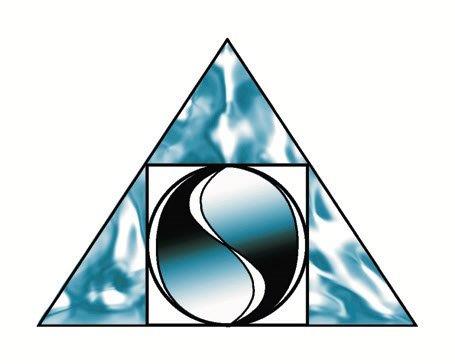The Serpentine Mind
“The serpentine mind
Disentangles
From the branches of confusion
Uncoils its knowledge to greet the dawn
And sees In the growing light.” ─ Quetzalcoatle
I have noticed that some of my clients seem to be stuck living in a “Garden of Eden” type frame of mind. This kind of consciousness is really an unconsciousness causing their thinking to be irrational. They are entangled and entwined in confusion. They are not clear headed about their personal reactions, and responsibility toward the negativity they encounter during their lives. The different interactions and events that happen throughout the world, and in their lives shock their idealization. Their notion is that everything should be good, loving, and harmonious in their lives like a peaceful garden.
The Garden of Eden is a symbol of paradise. It was a place of a union with God where individual consciousness did not exist. It could be likened to grains of salt or sugar that are dissolved in water. Perhaps, symbolically this was where we were before we were born into the world of shape and form. The garden contained the tree of Knowledge of good and evil.
Tree
A tree can be a symbol that represents a human being. The tree’s trunk is like the trunk of a person’s body. The branches are the arms. The roots to the tree are the feet. The tree’s top is how the head flourishes in thought and ideas as it grows. The tree unites heaven and earth as the sun shines on it, and the tree is rooted to the earth. A human being is also the center of their own life. A life that is cultivated by soul and spirit. A person grows up just like a tree and develops its intelligence and understanding. It seems like the idea of “blame or blaming” began in this garden. Adam and Eve did not take responsibility for their choices and looked to blame others. This causes confusion, lying and chaotic thinking like a serpentine mind.
Genesis 3:1-6
Now the serpent was more crafty than any beast of the field which the Lord God had made. And he said to the woman, “Indeed, has God said, ‘You shall not eat from any tree of the garden’?” The woman said to the serpent, “From the fruit of the trees of the garden we may eat; but from the fruit of the tree which is in the middle of the garden, God has said, ‘You shall not eat from it or touch it, or you will die.’” The serpent said to the woman, “You surely will not die! “For God knows that in the day you eat from it your eyes will be opened, and you will be like God, knowing good and evil.” When the woman saw that the tree was good for food, and that it was a delight to the eyes, and that the tree was desirable to make one wise, she took from its fruit and ate; and she gave also to her husband, and he ate. ( http://www.tlogical.net/adameve.htm )
The Blame Game
According to J. M. Fritzius at tlogical the human behavior of blaming began when God sees that Adam and Eve ate the fruit from the tree. Adam said, “The woman whom You gave to be with me, she gave me from the tree, and I ate” (Adam blamed Eve). Subsequently, Eve said, “The serpent deceived me, and I ate” (Eve blamed the serpent). From then on humankind began blaming others for their actions. Blaming others is still a common behavior. It is very difficult for many people to take responsibility for his or her life. Some people are always wanting others to tell them what to do or blaming them for their bad advice.
Adam and Eve responded to the serpent’s temptation. They each made the choice to eat the fruit from this tree. Because they ate the fruit, they were expelled out into the world of duality and physicality for their disobedience. The world of duality is the tension of opposites (Jung). Some examples of common dualities are good and evil, positive and negative, war and peace. There are many other tensions of opposites in the world of ego consciousness. Various pairs of opposites are filled with archetypal paradoxes that all people have to learn to navigate, manage, and integrate themselves.
The word serpentine has many different descriptions. It can be shrewd, subtly, sly, cunning, crafty, wily, turning, twisting, winding, and slithering to name a few. The serpentine mind connotes and portrays someone’s mind as circumventing and indirectly winding, twisting, and meandering around issues; sometimes to avoid blame, or personal responsibility. Oftentimes a person can seem to be winding and twisting in with different types of fears or anger. They are psychologically and emotionally stuck in embroiled tensions. There is a difficulty in moving into a clear-thinking mind. When an individual has lived a long time with confusion, personal enmeshments, and entangled associations, they find the serpentine mind is not on a straight path. The road ahead zigzags through the tension of opposites. Carl G. Jung who developed analytical psychology explained it this way:
“There is a good thing on top of that mountain. I will make a straight line for it.” But the archetypal way is not like that; it is a serpentine way that wriggles and spirals its way to the top. We often feel defeated by it and brought to a standstill. It makes most people terribly impatient and even desperate when nothing happens and they get nowhere. They feel hindered all the time; they don’t understand that this is just as it should be, that it is actually their only chance of getting to the top.” (C.G. Jung, The Visions Seminars , Book Two , p. 295)
Jung wrote extensively about the Self. The Self is similar to your own concept of God, Higher Power, the Divine, etc…. In Jung’s thought and theory; the center of your personality is the Self. It innately seeks to organize and maintain wholeness within your individual mind. Jungian psychotherapy is about becoming completely and wholly yourself. He called it the individuation process. The inner world brings to you from your unconscious dreams, images, urges, impulses, etc. to help guide your path. When you work with your own issues, you are navigating the serpentine way.
The “Fall” from the garden into the physical world has led to a great distancing from the personal connection to the inner Divine nature. There are many ways to integrate and reconnect your body-mind-spirit within yourself.
1. Depth Psychotherapy
2. AcuProcess TM (see my website)
3. Mindfulness and meditation practices
4. Body work
5. Authentic Movement
6. Dreamwork
7. The expressive arts
“Poetry, Painting & Music: the three Powers in Man of conversing with Paradise which the flood did not sweep away.” — William Blake, A Vision of the Last Judgment (1810)
© Ozimkiewicz







